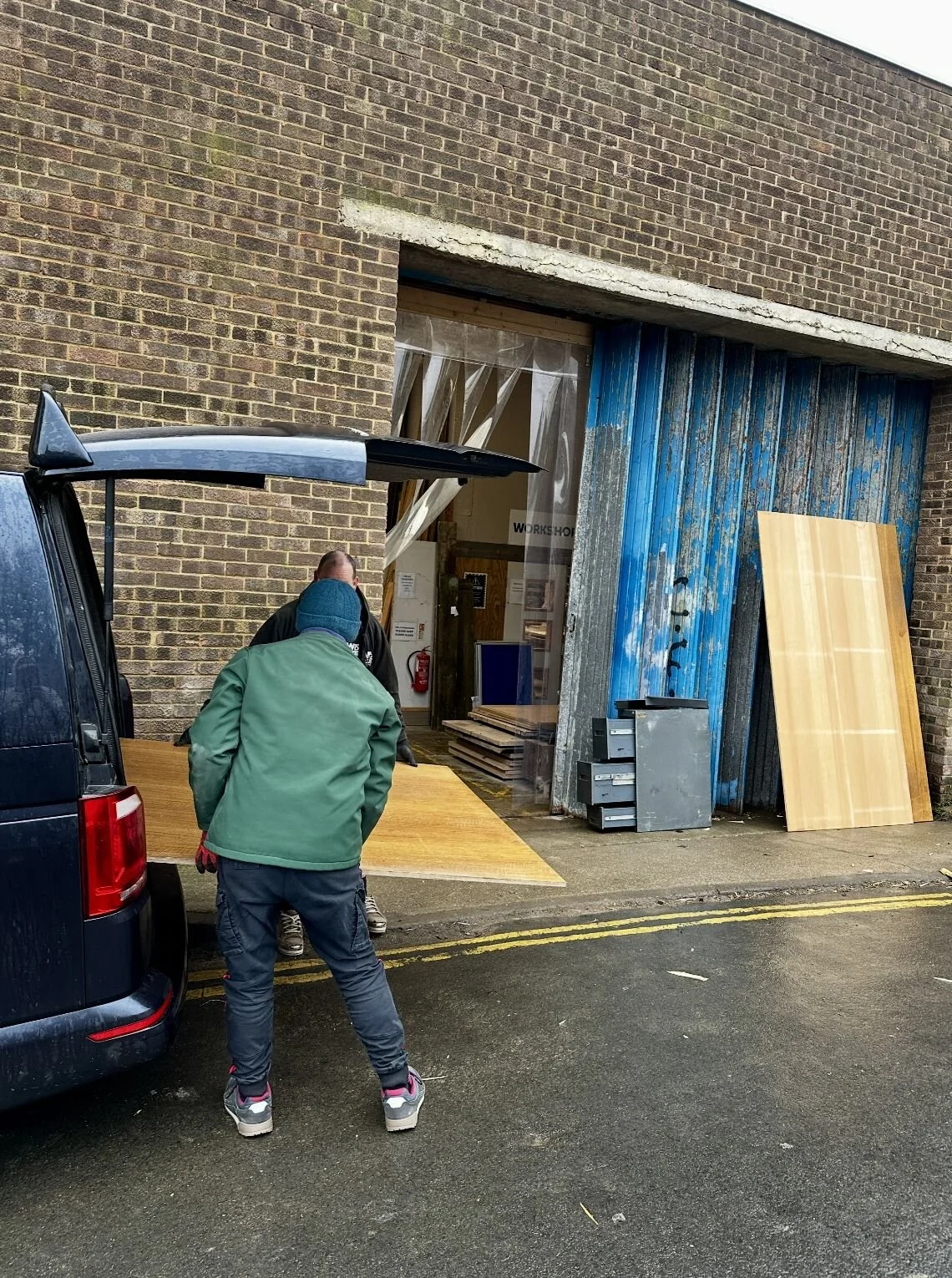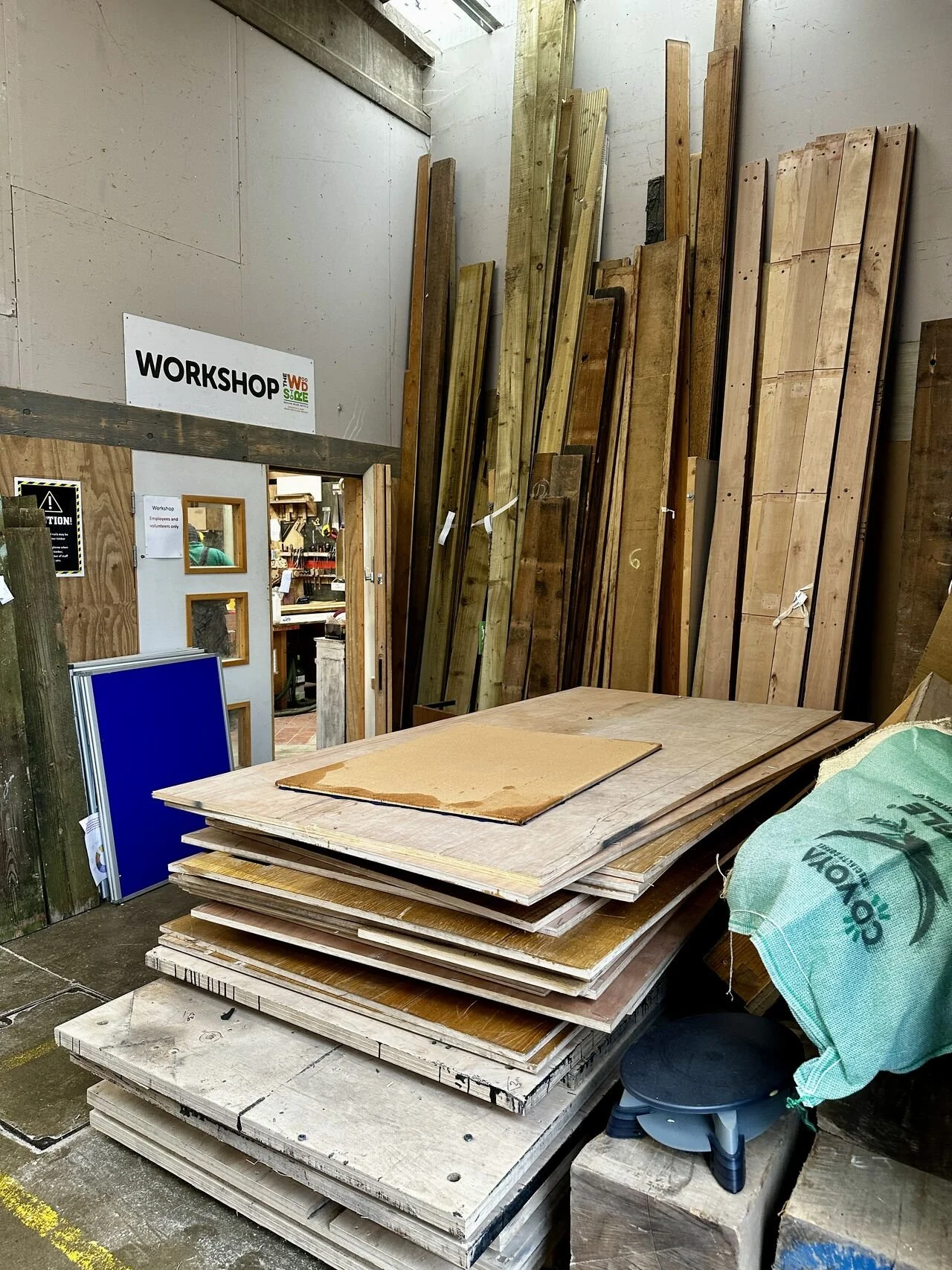Circularity in action
from waste to wonder
What happens when premium building materials meet mindful construction practices? Recently, we witnessed a perfect example of the circular economy in action, and it's got us thinking about how the construction industry can lead the charge in waste prevention.
During an office renovation, 30 sheets of high-quality Oak Veneered 18mm Birch Plywood were destined for disposal. Rather than watching this premium material—worth at least £5,000 if purchased new—end up in landfill or get incinerated, a client reached out asking for help to find these sheets a better home.
These beautiful sheets are now finding a second life through The Wood Store, Brighton & Hove's brilliant wood recycling project.
The Wood Store isn't just any recycling centre; it's a remarkable non-profit organisation that sits at the heart of Brighton's local circular economy. They're dedicated to protecting our environment through resource conservation, educating communities about sustainable behavioural change, and creating meaningful social impact by addressing unemployment and social exclusion.
This story wouldn't have been possible without Steve Pearce and The Bluum Group, who spotted the opportunity and made sure the right people knew about it. It's a lovely reminder that the circular economy thrives on community connections and people looking out for one another.
But here's the thing—this success story highlights something crucial that our industry needs to embrace more widely. Construction companies have an enormous opportunity to prevent waste before it even becomes waste. Every project presents chances to think differently about materials, to consider their entire lifecycle, and to ask: "How can we keep this in use for as long as possible?"
The construction sector generates millions of tonnes of waste annually, much of which could be redirected, reused, or repurposed with a bit of forward planning. When we take time to consider how materials can contribute to the circular economy, we're not just being environmentally responsible—we're often uncovering cost savings, building stronger community relationships, and creating opportunities for innovation.
The beauty of this story is its simplicity. No complex systems, no expensive technology—just someone who paused to think differently about what constitutes "waste." It's a reminder that the circular economy isn't some distant, complicated concept. It's happening right now, in our communities, through the thoughtful actions of individuals who choose to see value where others might see rubbish.
This is circularity in action—preserving value, reducing waste, and benefiting the community. It's exactly the kind of thinking that can transform how our industry operates, one rescued sheet of plywood at a time.



